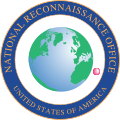Launch
It is believed that two Magnum satellites were launched from Space Shuttle Discovery (OV-103) during the missions STS-51-C in 1985 and STS-33 in 1989. The satellites reportedly have a mass of 2,200–2,700 kg (4,900–6,000 lb), operating in near-geosynchronous orbits, using Inertial Upper Stages (IUS) to get from the shuttle's orbit to the higher geosynchronous orbit. [1] According to Jim Slade of ABC News, the second satellite, USA-48, replaced the first, USA-8, which after more than four years in orbit was running out of maneuvering fuel required for keeping its station over the Indian Ocean. The mission of the two satellites was to listen in to military and diplomatic communications from the Soviet Union, China, and neighboring countries. [2]
This page is based on this
Wikipedia article Text is available under the
CC BY-SA 4.0 license; additional terms may apply.
Images, videos and audio are available under their respective licenses.
